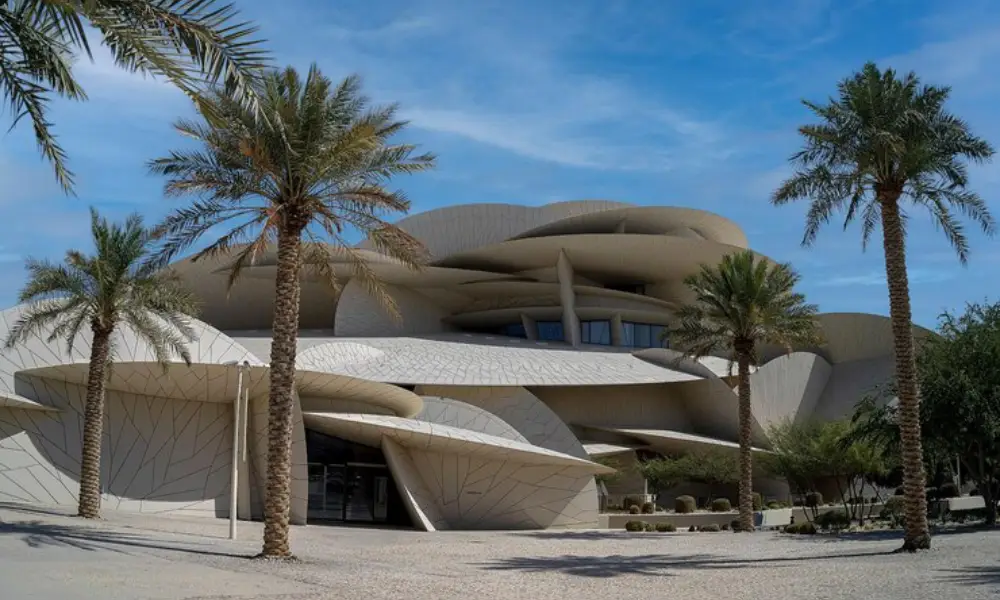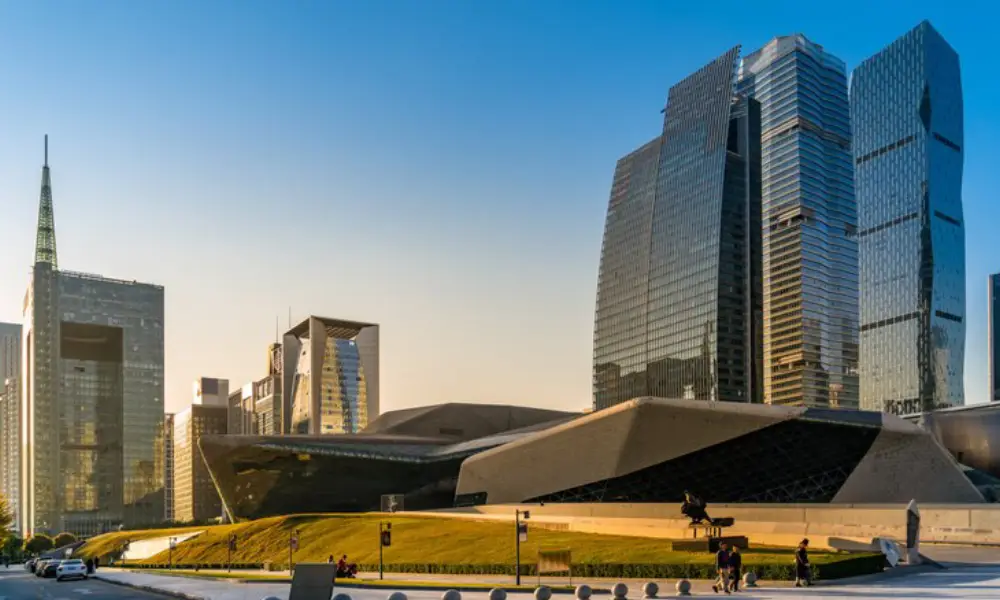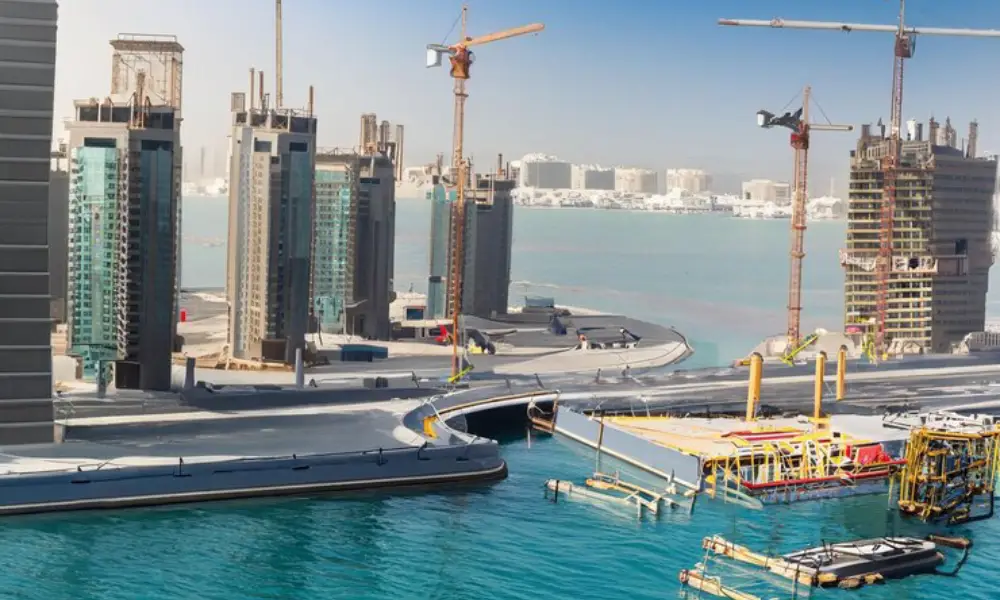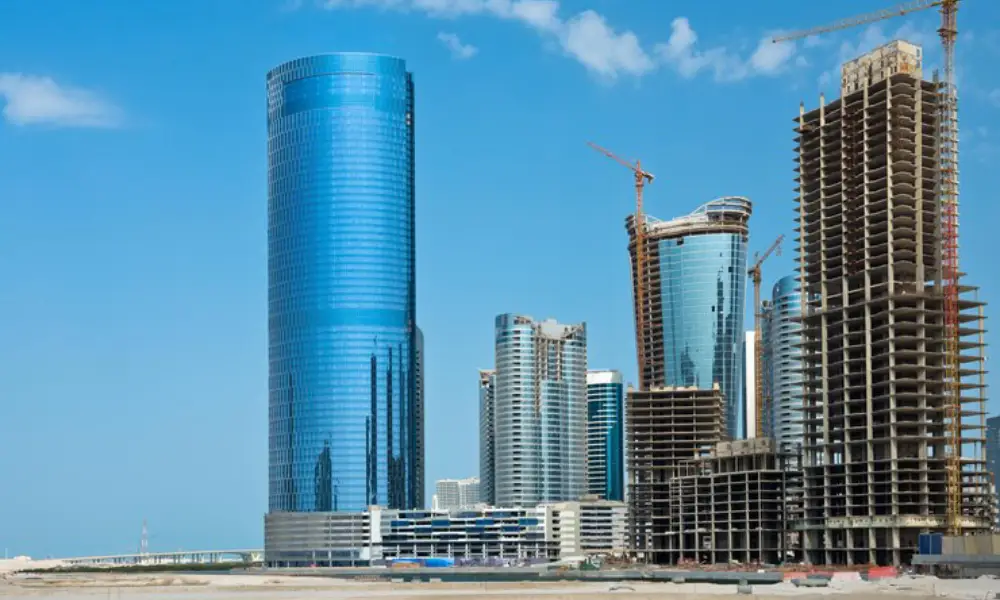
The Future of Architecture in the UAE: A Global Model for Urban Innovation
1. The UAE, a Pioneer of Architectural Transformation in the Middle East
Over the past few decades, the United Arab Emirates has become one of the most prominent centers of architectural transformation in the world. With a forward-looking vision and massive investment in infrastructure, the country has succeeded in shaping a new face for contemporary architecture in the Middle East. Dazzling skyscrapers, iconic structures, and smart urban projects are only part of the story of architectural progress in this land.
Through a bold combination of tradition and innovation, the UAE has managed to create a unique architectural identity that embodies the spirit of its local culture while moving along the frontiers of global design and technology. Today, cities such as Dubai and Abu Dhabi are not only destinations for tourists and investors but also sources of inspiration for architects and future designers — places where urban development is narrated through architecture, and the future emerges from the very heart of design and construction.
2. The Evolutionary Path of Architecture in the UAE: From Past to Present
Architecture in the UAE has undergone a transformative journey from simple, vernacular structures to globally advanced buildings. In the past, architecture in this region was inspired by the hot desert climate — wind towers, thick clay walls, and central courtyards were the main features of traditional homes, cleverly adapted to the environment. This architecture reflected the culture, local economy, and lifestyle of coastal and desert dwellers.
With the discovery of oil and the onset of modernization, the face of Emirati cities changed rapidly. The 1970s and 1980s marked the beginning of an era of reconstruction in which towers, commercial complexes, and modern structures replaced traditional homes. In the following decades, as tourism and the global economy grew, Emirati architecture moved beyond imitation of Western styles and developed its own independent identity.
Today, the country stands at a crossroads where past and future converge; architects, inspired by traditional elements and empowered by advanced technologies, create spaces that are not only functional and aesthetically pleasing but also embody philosophies of sustainability, innovation, and authenticity. This evolution has positioned the UAE as one of the pioneers of contemporary global architecture.
3. The Role of Vision 2071 in Shaping the Future of Architecture in the UAE
The UAE Vision 2071 is a long-term, forward-thinking plan that charts the nation’s path of development for the next half-century, with architecture as one of its key pillars. This vision aims to build a sustainable, advanced, and human-centered society, placing special emphasis on smart cities, green design, and innovation in construction.
Within this framework, Emirati architecture is evolving toward creating spaces aligned with cutting-edge technologies — from self-sufficient, smart buildings to urban infrastructures powered by data and clean energy. Policymakers and urban planners are shaping cities where architecture serves not only visual beauty but also social and environmental functionality.
Vision 2071 also highlights the importance of preserving cultural heritage alongside modernity. In this journey, the UAE strives to blend local traditions with global knowledge and technology, presenting a new architectural image that is both future-oriented and deeply rooted in the nation’s history and culture.

4. Sustainable and Green Architecture: The Core of Future Urban Development
In the future of Emirati architecture, sustainability is no longer an option — it is an essential necessity. Aware of the challenges of climate change and high energy consumption in arid regions, the UAE has adopted a serious approach toward green architecture. The goal is to create cities that coexist harmoniously with the environment while minimizing their carbon footprint.
Sustainable architecture in the UAE goes beyond the mere use of renewable energy. Intelligent building design that considers wind flow, sunlight, and shading; the use of local and recycled materials; natural ventilation systems; and green roofs are among the strategies that reduce energy consumption while enhancing residents’ comfort.
Examples such as LEED-certified buildings in Dubai and projects like “The Sustainable City” demonstrate that the UAE is taking serious steps toward green urban development. The country aims to build cities that are not only efficient and visually appealing but also symbiotic with nature — cities that will serve as global models for sustainable architecture in the years ahead.
5. Emerging Technologies in Architectural Design and Construction (AI, 3D Printing, BIM, and Robotics)
The future of architecture in the UAE has reached an unprecedented level of creativity and efficiency through the use of cutting-edge technologies. Artificial Intelligence allows architects to design spaces with optimized functionality, natural lighting, and intelligent ventilation. Advanced algorithms can predict occupant behavior and optimize design according to real user needs.
3D printing and robotics have revolutionized traditional construction methods; complex and unique structures that once required months or years of precise work can now be produced rapidly and accurately. Building Information Modeling (BIM) enables complete coordination among design, engineering, and construction teams, managing projects seamlessly from concept to operation.
These tools not only enhance construction quality and precision but also reduce costs, save resources, and improve project sustainability. By embracing these technologies, the UAE is creating buildings that are both beautiful and innovative, as well as intelligent and environmentally adaptive.
6. Smart Architecture and Digital Cities: Dubai and Abu Dhabi as Global Models
Dubai and Abu Dhabi are recognized as pioneers of smart architecture and digital cities worldwide. By integrating technology, big data, and the Internet of Things, these cities have created urban environments that are not only beautiful and efficient but also dynamic and intelligent experiences for residents and visitors alike. Buildings and infrastructures are equipped with sensors and automated systems to optimize energy use, manage traffic, and enhance public well-being.
Digital cities in the UAE go beyond technology alone; they represent a model of coexistence between modern urban life and intelligent urban planning. Autonomous transport systems, clean energy networks, and digital public services simplify daily life while protecting the environment. With this approach, Dubai and Abu Dhabi not only set global standards for future cities but also inspire other nations toward sustainable and smart urban development.

7. The Fusion of Tradition and Modernity in the Future Architecture of the UAE
A defining feature of the UAE’s future architecture is the artistic integration of tradition and modernity. Emirati and international architects, inspired by native elements such as wind towers, central courtyards, and Islamic geometric patterns, reinterpret this cultural heritage within innovative, modern projects. The result is a spatial experience that honors history and culture while showcasing progress and contemporary creativity.
This fusion is clearly visible in the design of skyscrapers, cultural complexes, and public spaces — where modern facades draw from traditional motifs, merging art, identity, and technology. Such an approach not only enhances visual appeal but also strengthens cultural connection and provides a unique experience for residents and visitors. Through this architectural philosophy, the UAE demonstrates that modernity and tradition can coexist to build a creative and sustainable future.
8. Human-Centered Design and Urban Well-being
In the future of Emirati architecture, human-centered design and quality of life stand as core principles. Cities and buildings are being planned to prioritize residents’ needs, comfort, and social interaction. Expansive public spaces, parks, pedestrian pathways, and green areas are among the urban initiatives that foster well-being and community connection.
Human-centered design also involves the use of natural light, optimized ventilation, sound control, and soothing color palettes to improve residents’ everyday experience. Smart transportation systems, easy access to services, and digital infrastructure further enhance urban comfort. With this approach, the UAE shows that architecture and urban planning are not only tools of aesthetics but also means to improve living standards and foster vibrant, healthy societies.
9. Climate-Resilient Architecture and Environmental Crisis Adaptation
The future of architecture in the UAE places special emphasis on designing buildings and urban spaces resilient to climate change and environmental crises. Given the desert conditions, extreme temperatures, and limited water resources, architects are developing solutions to ensure structures withstand heat, sandstorms, and severe weather fluctuations.
The use of durable and lightweight materials, natural cooling systems, green roofs, and energy-efficient techniques form part of these climate adaptation strategies. Furthermore, urban planning that prioritizes open spaces, airflow, and efficient water management reflects the nation’s commitment to coexistence with its natural surroundings.
This approach not only enhances the safety and longevity of buildings but also reduces environmental impact and improves residents’ quality of life. Through investments in resilient architecture, the UAE presents a model that unites innovation, technology, and ecological responsibility.

10. Innovative Materials and Emerging Technologies in Construction
The future of Emirati architecture is witnessing a remarkable transformation in quality, aesthetics, and sustainability through the use of innovative materials and advanced technologies. Self-healing concrete, smart glass, lightweight metals, and heat- and moisture-resistant composites enable architects to create inventive, durable, and environmentally friendly structures.
Emerging technologies such as 3D printing in construction, robotics for precision and speed, and advanced digital systems for energy and resource management have optimized the building process. These tools also make it possible to design complex, one-of-a-kind forms that were previously impossible to execute.
By combining these materials and technologies, the UAE is creating structures that are not only visually stunning and modern but also long-lasting, energy-efficient, and environmentally harmonious. This direction is guiding the future of construction toward innovation, sustainability, and boundless creativity.
11.Futuristic and Iconic Projects in the UAE (From Artificial Islands to Visionary Towers)
The UAE is globally renowned as a land of futuristic and iconic architectural projects. From artificial islands and large-scale coastal developments to awe-inspiring towers and visionary structures, the nation continues to redefine the limits of conventional architecture. Projects like Palm Jumeirah and the Burj Khalifa showcase not only exceptional technical and design mastery but also symbolize the UAE’s ambition, innovation, and economic strength.
These projects, blending advanced technologies, smart design, and modern materials, serve as models of sustainable and creative architecture. Each major structure or urban plan embodies an effort to deliver a unique experience for residents and visitors, reflecting the UAE’s forward-looking vision in architecture and urban development. Through such ventures, the country has become a global benchmark for innovative and outstanding urban design.
12.The Role of Art, Light, and Space in Contemporary Emirati Architecture
In contemporary Emirati architecture, art, light, and space play central roles in shaping urban and architectural experiences. Artists and architects use natural and artificial light to design interior and exterior spaces that convey a sense of movement, depth, and serenity. The interplay of light and shadow, symmetry, and proportion transforms buildings and public spaces into living works of art.
Moreover, human-scaled spatial design enhances the connection between people and their surroundings, fostering social interaction. The use of artistic elements in facades, open areas, and interiors highlights cultural identity and authenticity, creating a multi-sensory experience for residents and visitors. With this approach, the UAE proves that architecture extends beyond functionality, blending art, technology, and human-centered values to create dynamic, inspiring, and unique urban environments.

13. The Impact of Luxury Tourism and Economic Growth on Future Architectural Styles
Luxury tourism and economic expansion have significantly influenced the architectural styles of the UAE’s future. The proliferation of five-star hotels, luxury resorts, and modern shopping centers has encouraged architects to design spaces that are lavish, striking, and experience-driven. This trend has turned urban architecture into a means not only of functionality but also of attracting tourists and showcasing national economic strength.
Beyond visual splendor, luxury tourism has led to meticulous attention to detail, material quality, lighting, and interior design. Buildings and projects are designed to deliver unique and luxurious experiences for visitors while reflecting both cultural identity and modern sophistication. This combination defines the future of Emirati architecture — a style that emphasizes innovation and creativity while enhancing the economic and social sustainability of cities.
14. Collaboration Between International and Local Architects in Shaping the Future Vision
A key factor in the evolution of Emirati architecture is the collaboration between international and local architects. This partnership merges global perspectives with a deep understanding of culture, climate, and local needs, resulting in distinctive and innovative designs. Local architects, with their knowledge of traditions, materials, and environmental conditions, ensure harmony with regional identity, while international architects bring modern elements and cutting-edge technologies based on global experience.
The outcome is a cityscape that is both creative and forward-looking, yet deeply rooted in Emirati culture and history. Joint projects between domestic and foreign teams not only create visually unique landmarks but also establish new standards for sustainable, intelligent, and human-centered architecture — elevating the UAE’s architectural vision to a truly global level.
15. The Future of Interior Design and Public Spaces in Emirati Cities
Interior design and public spaces in the UAE are evolving toward smart, user-oriented, and multi-sensory experiences. In the future, interiors will not only serve residential or professional purposes but will also enhance psychological well-being, social interaction, and visual experience.
The use of natural light, color, and sustainable materials creates calm and inspiring environments aligned with residents’ needs.
Urban public spaces are being designed with a focus on interaction, accessibility, and flexibility. Parks, plazas, walkways, and cultural centers are equipped with smart technologies to offer dynamic experiences suited to modern life.
Through this approach, the UAE demonstrates that interior and public space design can bridge everyday life, technology, and culture — transforming cities into engaging, functional, and sustainable environments.

16. Challenges Facing Architects on the Path of Innovation and Sustainability
Despite unprecedented opportunities for innovation, architects in the UAE face a series of challenges. One of the most significant is achieving balance between creativity, aesthetics, and environmental sustainability — designing structures that are both modern and innovative while minimizing energy and natural resource consumption.
Additionally, project time constraints, high construction costs, and societal and investor expectations for iconic, eye-catching buildings may limit creative freedom. The rapid pace of technological change and the need for new skills also compel architects to stay constantly updated and to redefine design and construction methodologies.
Despite these obstacles, Emirati architecture continues to evolve by combining innovation, sustainability, and creativity — charting a new course for urban design and future buildings. This path represents an ongoing pursuit of intelligent equilibrium between beauty, functionality, and environmental responsibility.
17. Emirati Architecture as a Model for the Cities of the Future
By integrating innovation, advanced technology, sustainability, and respect for local culture, Emirati architecture presents a unique model for the cities of the future. The country’s remarkable projects demonstrate that urban development can be both visually stunning and intelligent, sustainable, and human-centered.
With a focus on smart architecture, advanced materials, dynamic public spaces, and user-driven interior design, the UAE has become an inspiring environment for architects and urban planners worldwide. The nation not only shows how tradition and modernity can coexist but also sets new benchmarks for innovation, urban well-being, and resource management.
Ultimately, Emirati architecture represents a blend of boldness, creativity, and environmental responsibility — redefining the vision of future cities and serving as a global model for intelligent, sustainable, and innovative urban development.

